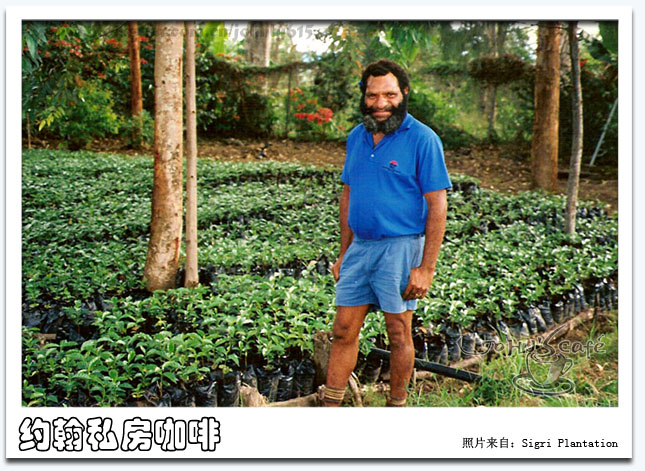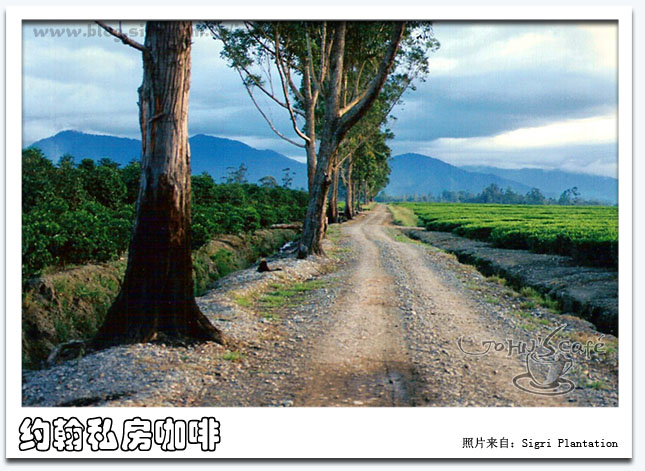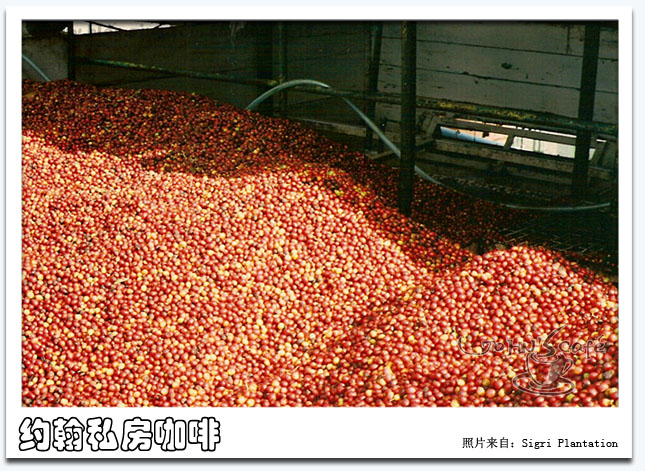Washed Coffee from Fine Coffee beans Sigri Farm
Having nothing to do, I was looking for some information about Sigri farm coffee in Papua New Guinea. I found these photos and information on the Gimmetries Coffee website.

Sigri Plantation is located in the Papua New Guinea highlands. Growing conditions here are well-suited for coffee: about 5200 feet above sea level, with a cool climate and plenty of rainfall.
Sigri Farm is located in Papua New Guinea, where the environment is very suitable for coffee growth, about 5200 feet (about 1600 meters) above sea level, the climate is cool and rainy.

"Processing" or "milling" is the way farmers separate the coffee bean from the pulpy fruit around it. The Sigri Estate has been refining its coffee processing method for over fifty years.
Through treatment, workers separate the pulp of coffee berries from seeds (raw coffee beans). Sigri Farm has been using traditional methods to handle coffee for more than 50 years.

Sigri uses a classic processing method: fully-washed and sun-dried. Processing the coffee immediately after harvest ensures a clean flavor in the final cup.
Sigri uses the traditional washing method to treat the coffee, that is, the coffee pulp and seeds are separated by complete washing immediately after picking, and then dried. This treatment ensures the clear and clean taste of sigri coffee.

The beans are washed three times over a 72-hour period. In between washings, they are held in fermentation tanks, which helps to break down the pulp around the bean. Once all the pulp is removed, the beans are soaked one last time in fresh water.
After 72 hours of washing and fermentation, the pulp is gradually separated from the seed. After the pulp is finally separated from the seed, the coffee beans are washed and soaked for the last time.

The beans are spread onto wide patios to dry in the sun. Over the next several days, the beans will be turned over with rakes make sure every last bean is dry. Finally, the coffee is ready to be sorted, shipped, and roasted. The final cup is deep and sweet, with an earthy flavor.
The coffee beans (soaked for the last time) are spread evenly on the drying ground to dry. Over the next few days, beans are often sown to ensure that each bean is completely dried. Beans can then be hand-graded, transported and baked according to the standard. Finally, the sigri in our cup is the sweet coffee with a touch of earthy aroma.

Important Notice :
前街咖啡 FrontStreet Coffee has moved to new addredd:
FrontStreet Coffee Address: 315,Donghua East Road,GuangZhou
Tel:020 38364473
- Prev

Fine Coffee learn the processing flow of Coffee beans
1. Peeling removes the peel and most of the flesh by mechanical or manual means. two。 Fermentation removes the mucus and film from the core by fermentation. as the length of fermentation time will affect the flavor of coffee, each manufacturer has its own fermentation time. 3. The drying method is mainly divided into natural sun drying and natural air drying. Excessive water content can easily lead to mildew and insect growth of raw coffee beans.
- Next

Selection of coffee beans by shaker in boutique coffee science
I saw on the Internet yesterday that someone asked if the vibrating screen could screen peanuts and coffee beans, and the answer was yes. In the following, some problems and solutions of vibrating screen in screening these two materials are discussed. First of all, customers need to know the number of peanuts and coffee beans, and then choose the appropriate sieve, which is like screening peanut and coffee beans.
Related
- Beginners will see the "Coffee pull flower" guide!
- What is the difference between ice blog purified milk and ordinary milk coffee?
- Why is the Philippines the largest producer of crops in Liberia?
- For coffee extraction, should the fine powder be retained?
- How does extracted espresso fill pressed powder? How much strength does it take to press the powder?
- How to make jasmine cold extract coffee? Is the jasmine + latte good?
- Will this little toy really make the coffee taste better? How does Lily Drip affect coffee extraction?
- Will the action of slapping the filter cup also affect coffee extraction?
- What's the difference between powder-to-water ratio and powder-to-liquid ratio?
- What is the Ethiopian local species? What does it have to do with Heirloom native species?

